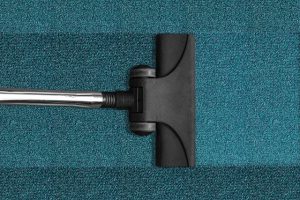Discover the hidden threats that a dirty rug poses to your health and well-being. Learn how to protect yourself and your family from the unseen dangers lurking beneath your feet.
What's Hiding in Your Rug? The Unsettling Truth
Have you ever stopped to think about what's lurking in your dirty rug? It's not just dirt and dust that accumulate over time. In fact, there are various unseen dangers that can pose serious health risks to you and your family. Let's take a closer look at what's hiding in your rug:
- 1. Bacteria and Germs:
Your rug is a breeding ground for bacteria and germs. These microorganisms thrive in warm and humid environments, and your rug provides the perfect conditions for them to multiply. From E. coli to Salmonella, there are many harmful bacteria that can be present in your rug. - 2. Dust Mites:
Dust mites are tiny creatures that feed on dead skin cells and thrive in warm and humid environments. They can be found in your carpet and can trigger allergies and asthma symptoms, such as sneezing, wheezing, and coughing. In fact, dust mites are one of the most common allergens found in homes. - 3. Mold and Mildew:
If your rug gets wet and is not dried properly, it can develop mold and mildew. These fungi can release spores into the air that can cause respiratory problems, such as coughing, wheezing, and shortness of breath. Mold and mildew can also cause skin irritation and allergic reactions in some people.

A close-up photo of dust mites and allergens hidden in a dirty rug's fibers
How Can These Dangers Affect Your Health?
The unseen dangers lurking in your dirty rug can have serious consequences for your health. Bacteria and germs can cause infections, while dust mites can trigger allergies and asthma symptoms. Mold and mildew can cause respiratory problems and skin irritation. Here are some ways in which these dangers can affect your health:
- 1. Allergies and Asthma:
Dust mites are one of the most common triggers of allergies and asthma symptoms. When you inhale the tiny particles they produce, they can cause sneezing, coughing, wheezing, and shortness of breath. If you have a pre-existing respiratory condition, such as asthma, exposure to dust mites can make your symptoms worse. - 2. Infections:
Bacteria and germs can cause infections, especially if you have cuts or open wounds on your skin. These microorganisms can enter your body through your skin and cause redness, swelling, and pain. Some types of bacteria can cause serious infections, such as staph infections, which can be life-threatening if left untreated. - 3. Skin Irritation:
Mold and mildew can cause skin irritation, especially if you come into direct contact with them. They can cause redness, itching, and rashes, and in some cases, they can cause allergic reactions. If you have sensitive skin, exposure to mold and mildew can make your symptoms worse. - 4. Respiratory Problems:
Mold and mildew can release spores into the air that can cause respiratory problems. When you inhale these spores, they can cause coughing, wheezing, and shortness of breath. In some cases, they can cause serious respiratory conditions, such as pneumonia and bronchitis.
Is Your Vacuum Cleaner Enough to Keep You Safe?
While vacuuming your rug is an important part of keeping it clean, it may not be enough to keep you safe from the unseen dangers lurking in its fibers. Here are some reasons why your vacuum cleaner may not be enough:
1.
Ineffective at Removing Dust Mites: While vacuuming can remove some of the dust mites present in your rug, it may not be enough to get rid of them completely. Dust mites are very small and can hide deep in the fibers of your rug, making them difficult to remove. Additionally, some vacuum cleaners may not have strong enough suction power to remove all of the dust mites.
2.
Ineffective at Removing Mold and Mildew: Vacuuming may not be effective at removing mold and mildew from your rug. These microorganisms can grow deep in the fibers of your rug and may require specialized cleaning techniques to fully remove them. Additionally, vacuuming can spread mold spores throughout your home, making the problem worse.
3. May Not Remove All Bacteria and Germs: While vacuuming can remove some bacteria and germs from your rug, it may not be enough to remove them all. Some types of bacteria can be resistant to vacuuming and may require specialized cleaning techniques to fully remove them.

A side-by-side comparison of a rug before and after vacuuming, showing the limitations of vacuuming alone
"An ounce of prevention is worth a pound of cure": Rug Cleaning Tips
- Vacuum Regularly:
One of the best ways to prevent dirt, dust, and other debris from building up in your rug is to vacuum it regularly. Aim to vacuum your rug at least once a week, or more often if you have pets or live in a particularly dusty area. - 2. Blot Spills Immediately:
If you spill something on your rug, it's important to act quickly to prevent the spill from setting in and causing permanent damage. Use a clean cloth or paper towel to blot up the spill as soon as possible, being careful not to rub the stain further into the fibers of the rug. - 3. Use a Rug Pad:
Using a rug pad can help prevent your rug from slipping and sliding around on the floor, which can cause wear and tear over time. Additionally, a rug pad can help prevent dirt and debris from getting trapped underneath your rug, making it easier to keep clean. - 4. Rotate Your Rug:
Rotating your rug every few months can help prevent wear and tear in high-traffic areas, as well as prevent uneven fading from exposure to sunlight. Additionally, rotating your rug can help prevent dirt and debris from becoming deeply embedded in the fibers of the rug. - 5. Professional Cleaning:
While regular vacuuming and spot cleaning can help keep your rug clean, it's important to have it professionally cleaned from time to time to remove deeply embedded dirt, dust, and other debris. Aim to have your rug professionally cleaned at least once a year, or more often if you have pets or live in a particularly dusty area.
The Unseen Dangers Lurking in Your Dirty Rug:
| Risk | Effect | Risk | Effect |
|---|---|---|---|
| Mold & Mildew | Allergens, respiratory ailments, skin irritation | Dust & Dust Mites | Allergens, asthma, respiratory issues |
| Bacteria & Viruses | Illness, infections, fever | Insects & Insect Droppings | Bites, rashes, allergic reactions |
| Chemicals & Odors | Headaches, nausea, dizziness | Pollen & Pollutants | Allergic reactions, asthma |
| Heavy Metals & Other Toxins | Long-term health issues | Fires & Smoke | Smoke inhalation, burns |
In conclusion, maintaining a clean rug is essential for a healthy home environment. By recognizing the unseen dangers and taking appropriate steps to clean and maintain your rug, you can enjoy a safer, healthier living space.






